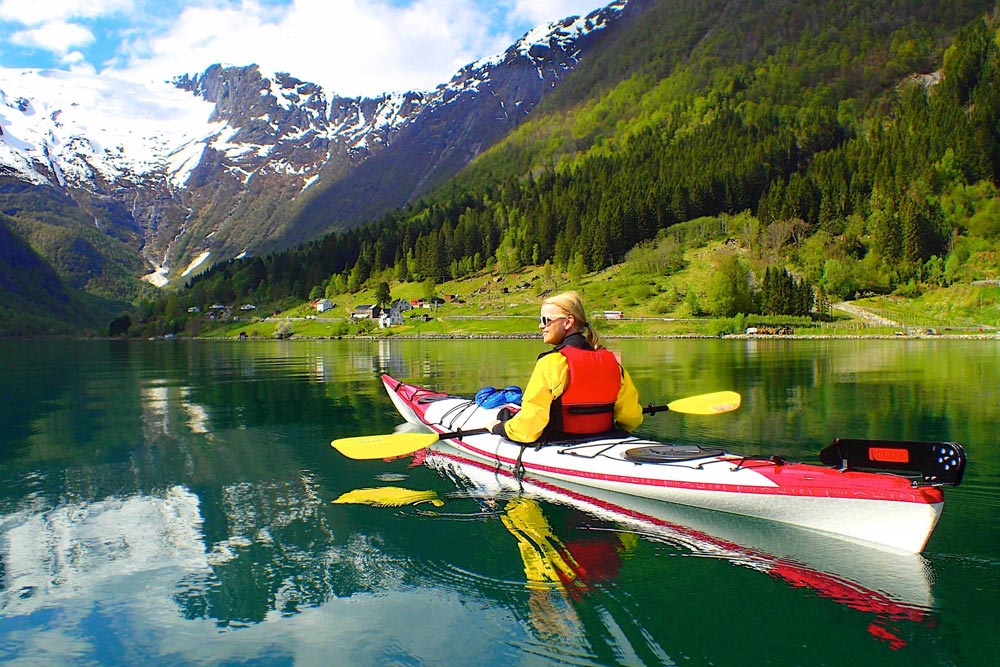Kayaking is one of the types of extreme water sports (rowing sports), water tourism and water activities using a small personal rowing vessel – a kayak.
A kayak is when the rower sits facing forward, feet in front, using a two-bladed paddle to create thrust. Most kayaks have enclosed decks, although sit and inflatable kayaks are also growing in popularity.

Types of kayaking
Let us explain what types of kayaking are available and help you choose what is right for you. The type of kayak you need depends on how serious you take your hobby and the type of water you plan to paddle on.
Touring
If you plan on kayaking long distances, perhaps for travel, touring will be ideal for you.
The rower’s seat in the kayak is not airtight, keep this in mind if water gets inside the kayak. But usually there is an enclosed space behind the bulkhead for storing essentials.
Due to the fact that tourist kayaks are large and heavy, they are usually used in open and predictable waters. Often rented out and no additional skills are required to operate a pleasure kayak
Sea kayaking
If you plan on kayaking in the sea, you will have to face choppy waters. Unlike a tourist kayak (although they look the same), you will have two sealed bulkheads.
Sea kayaks are long and thin up to 20 feet (6 meters) in length, allowing them to navigate choppy waters at high speed.
Being at sea is not a joke, you need to be trained by a professional before going on your own. Be sure to hire an instructor or take a briefing!
Because of their weight, you’ll need some serious strength and stamina to keep up with speed.
Whitewater kayaking
Whitewater kayaks are usually much smaller. They are designed to overcome uneven and rocky sections of streams, streams and even rivers.
They are designed to be nimble and agile, but they come at a price of speed in calm waters. Don’t expect to be able to keep up with tourist kayaks if you go down calm waters like a canal.
Whitewater is unpredictable, fast and dangerous. If you want adrenaline; head for the rough water! Training is strictly necessary. Whitewater is already a real extreme.
Surf kayaking
For kayaking surfing, a boat similar to whitewaters is used. And like kayaking on rough waters, it can be extremely dangerous. Requires skills and training from professionals.
Basically your kayak is your surfboard, but you can also use the paddle to stay on the wave (or roll over if you roll over).
Whitewater relies on control and precision. Kayak surfing is similar to surfing, but you need a little more; bursts of power to stay on the wave or get back on it
As with normal surfing, you will need to paddle fast and hard to overcome the oncoming waves when you decide to catch a wave. And when you see a wave, you need that surge of power to catch it; it’s not as easy as some kayakers think!


